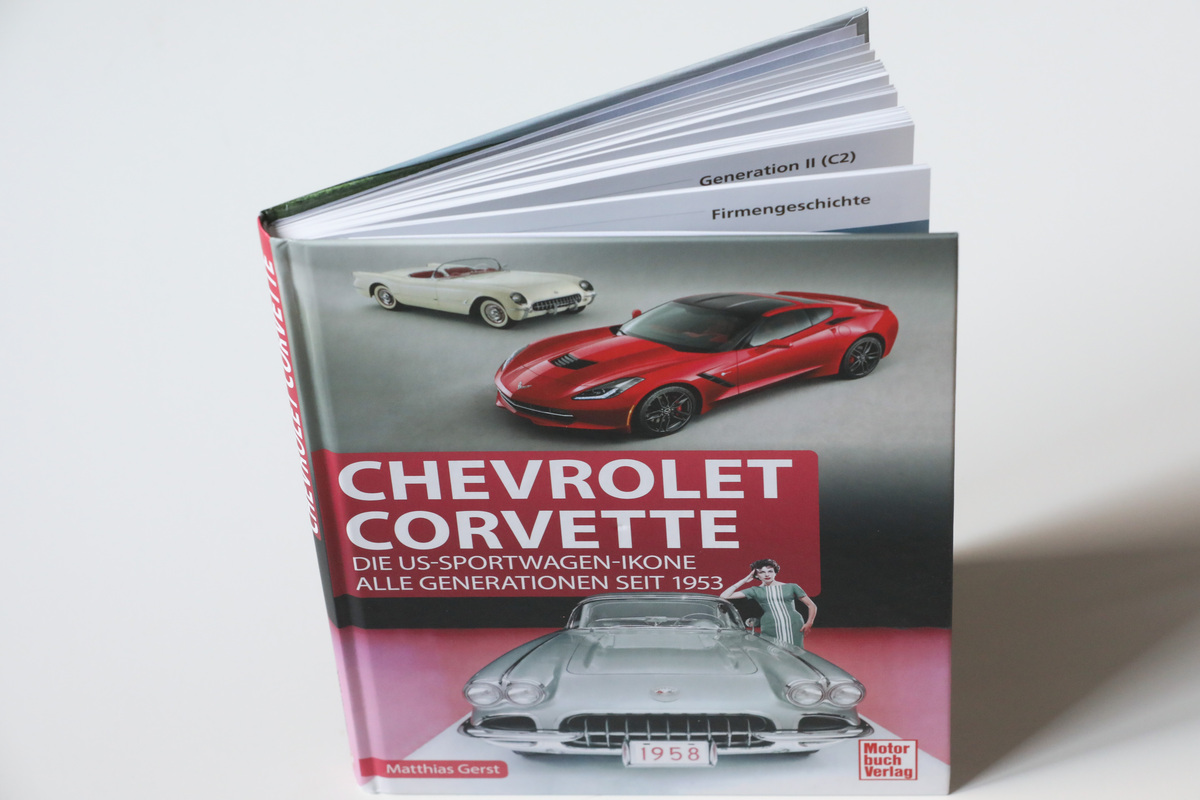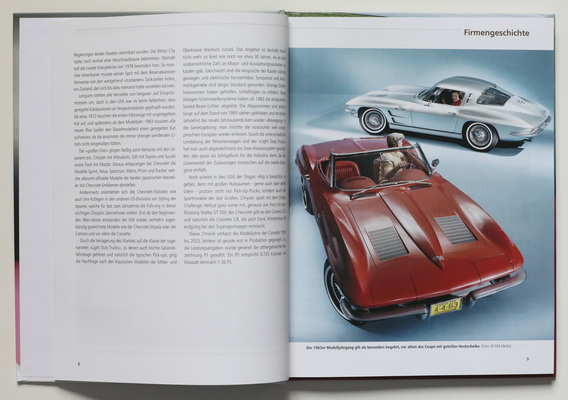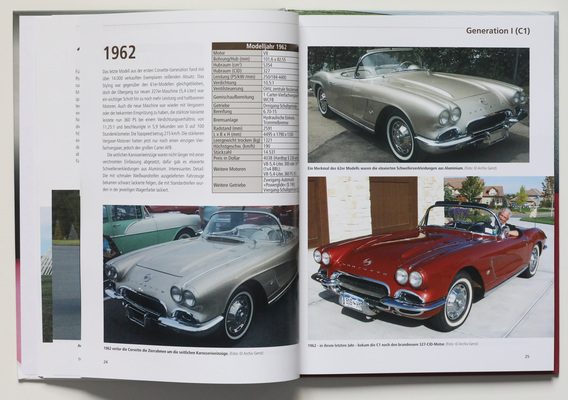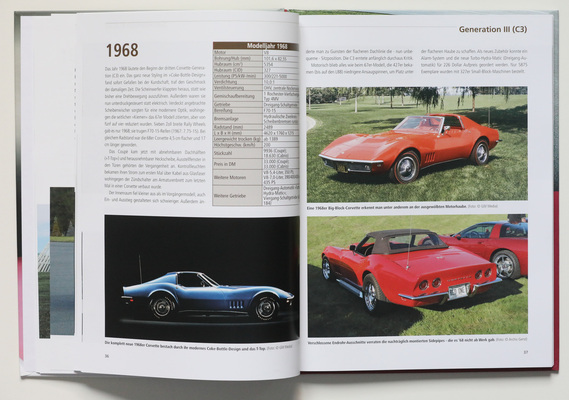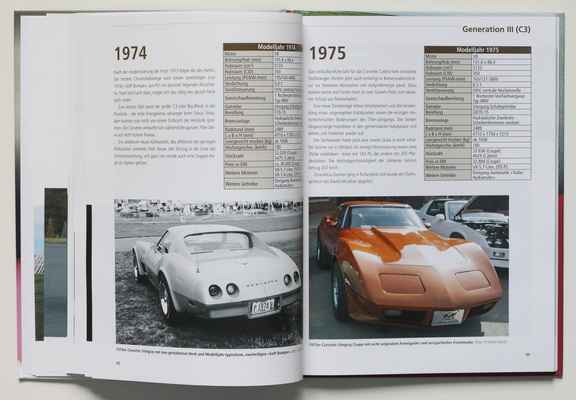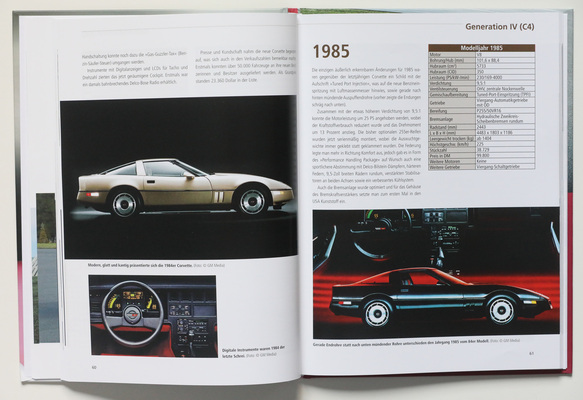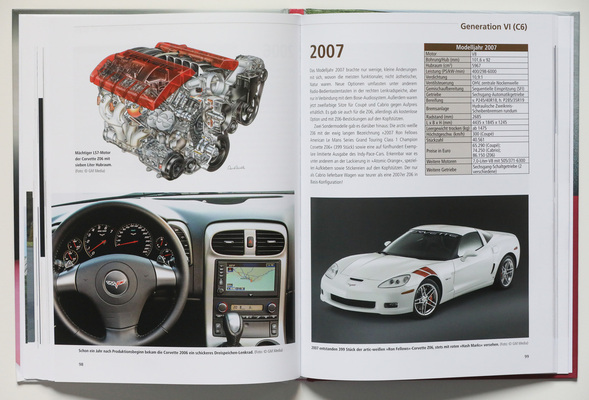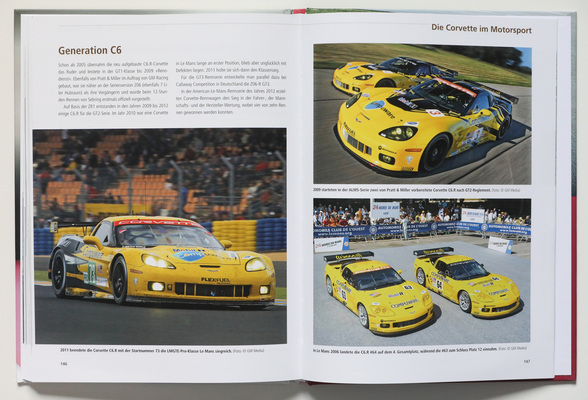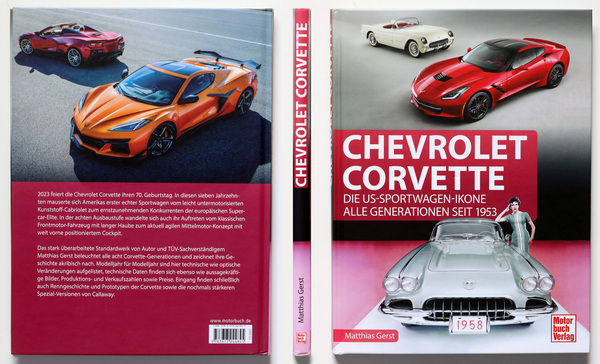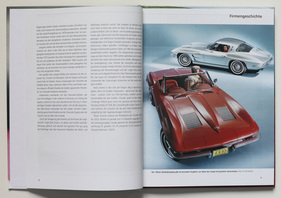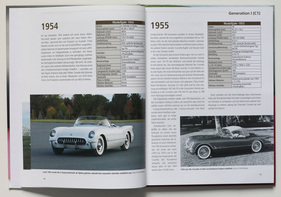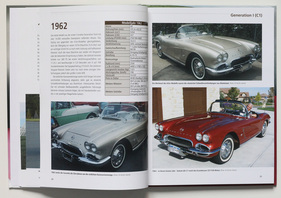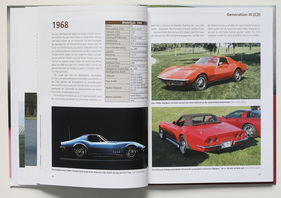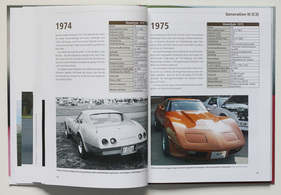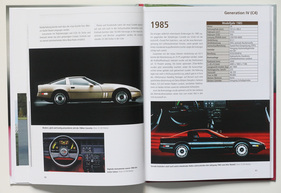Almost exactly 70 years ago, on January 17, 1953, the Chevrolet Corvette was presented to the public. Matthias Gerst has taken this anniversary as an opportunity to write a new book about America's first and only mass-produced sports car, in which he devotes 160 pages to all eight generations from the first automatic roadster to the current mid-engined coupé.
Above all, fundamentally
In purely mathematical terms, that's a good two pages per model year. However, there are also chapters on prototypes and studies, racing versions, Callaway derivatives and a brief general Chevrolet history, which means that a model year can sometimes be limited to just one page.

The term "standard work" on the back cover should therefore be treated with caution (or ignored), as there are books for each model series alone that are twice as thick. An appendix with detailed technical data, price lists, equipment lists, color charts and the like is missing.
Nevertheless, there is a small box with the most important data (engine power, top speed, number of units, base price, etc.) for each model year, each of which takes up a quarter of a page. If you then add a half-page photo of the car in question, the one-page years are already cramped for running text. Due to this brevity, the content is very selective: sometimes more on the paint colors, sometimes more on individual equipment options and sometimes on different engine and transmission combinations - but never on everything at the same time.

It's not very clever when the already brief text only formulates what is either already in the data box or only describes what can also be seen in the pictures. Occasionally, however, the small text section also deals with various technical production features. For example, for model year 1962, it states that all vehicles that were fitted with whitewall tires ex works had black painted wheels, while vehicles without whitewall tires had wheels in the body color. This is the kind of model-historical quibble you would expect from a book that describes itself as a "standard work". Unfortunately, they are quite rare. But more space would have been needed to go into such detail for each model year.
Limited picture selection
The individual model years are largely illustrated with historical factory photos from the GM archive. Occasionally, however, blurred photos of "tinkerers' stalls" with spackled front masks have crept in (e.g. MJ 1975), which were taken at car meetings and are not really suitable as reference objects. Doubly incomprehensible: one page further on, a true-to-original '75 Corvette is shown in two sharp photos from the front and rear. The space of the blurred photo would have been better used for a picture of the interior.

In general, photos of interiors and engine compartments are few and far between. Instead, occasionally a model is even shown three times from the same perspective, for example in the 1962 model year. As this is always a three-quarter view from the front, there is also no view of what is probably the most striking and important change in the 1961 and 1962 models compared to the previous years: the new "ducktail" rear end, which was already anticipated by the Sting Ray of the 1963 model year. The '61 model can also only be seen as a three-quarter view from the front. In a book of this kind, it would generally be nice to have a series of pictures that allow you to compare the detailed changes made in the individual model years, such as the five different fuel filler caps on the Sting Ray.
Away from the cars, not always correct
However, the changes between the model years mentioned in the running text and in the captions are - as far as we can tell - largely correct, even if they are occasionally in unexpected places. For example, the washboard made of imitation air vents on the hood of the '58 model is only mentioned for the 1959 model because it was removed again for this model year, but not a syllable is mentioned for the 1958 model. However, the Corvette already had the "powerdomes" - elongated bulges on the hood - from 1956 and not just from 1958.
The information about the historical background, on the other hand, is sometimes much more erroneous. For example, Gerst writes in the Chevrolet brand history that Bill Mitchell became Harley Earl's successor in 1946. In fact, Mitchell only took over the position of "Vice President, Styling Section" from Earl at the end of 1958. In 1946, Mitchell was still head of the Cadillac studio.
In the same chapter, Gerst also writes about a nationwide speed limit of 55 mph in the USA, which was introduced in 1954 and adopted by all 50 states. However, until the introduction of the "National Maximum Speed Limit" in January 1974, speed limits in the USA were still a matter for the individual states - and what's more, in 1954 the USA still consisted of only 48 states. Today, by the way, you are allowed to drive up to 85 miles per hour in Texas, not 75 as mentioned in the text.
Regarding the Kelsey-Hayes bikes that the Sting Ray is wearing in the first press photos from the end of 1962, Gerst writes: "They were to become one of the most popular options." This is correct - but only from 1964, as they had to be removed from the range for 1963 following a patent dispute with Dayton. Unfortunately, this clarification is missing.
Conclusion
"Chevrolet Corvette - The US sports car icon - All generations since 1953", as the book is called in full, is a nice overview of the individual years of the plastic sports car with the warlike name.
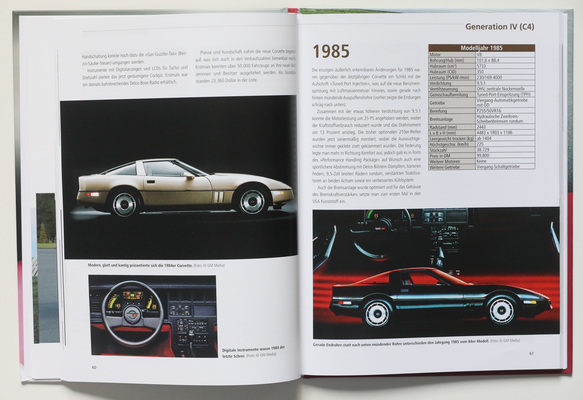
It illustrates each model at least once, describes the main changes from year to year and lists the most important data, but - also due to its size - does not go into enough depth to live up to the promise of a "standard work" on the back - although this is probably more the fault of the editor than the author. For beginners, Gerst's book is a good start, even considering the price of 24.90 euros. Those who have already delved a little deeper into Corvette lore will find little new, especially about the earlier models.

Bibliographical information
- Title: "Chevrolet Corvette - The US sports car icon - All generations since 1953"
- Author: Matthias Gerst
- Language: German
- Publisher: Motorbuch-Verlag
- Edition: 1st edition, December 2022
- Scope: 160 pages, 180 photos
- Format: 210 x 280 mm, hardcover
- Price: EUR 24.90
- ISBN: 978-3-613-04484-5
- Buy/order: Online at amazon.de, online at Motorbuch-Verlag or at the relevant bookstore
